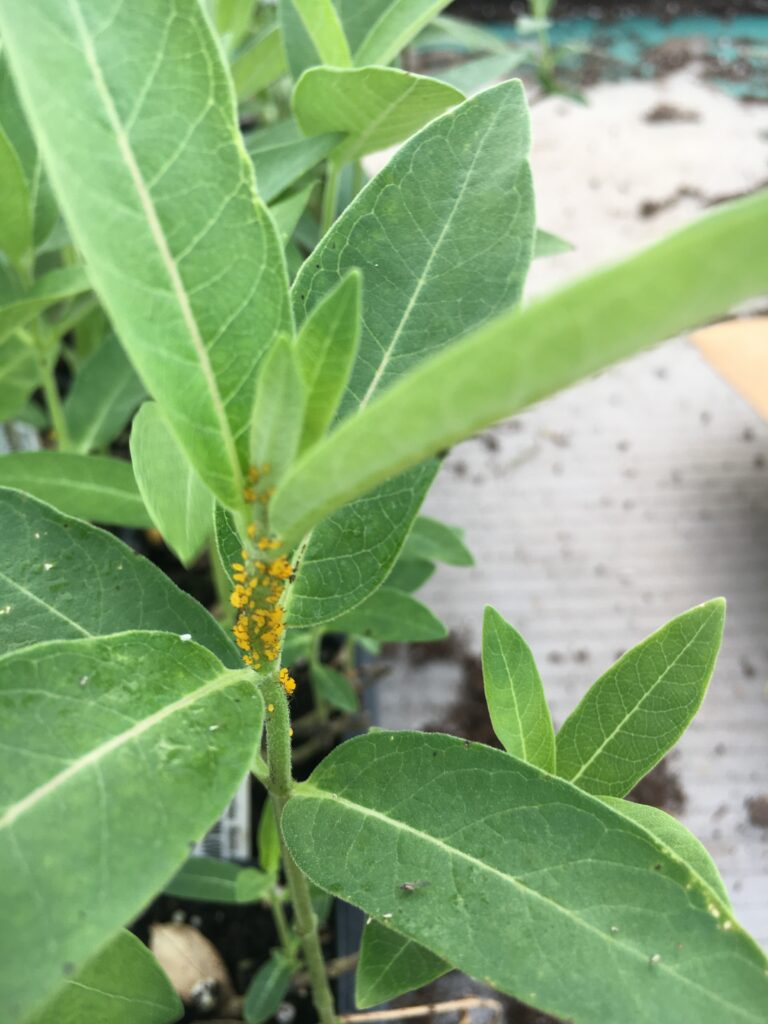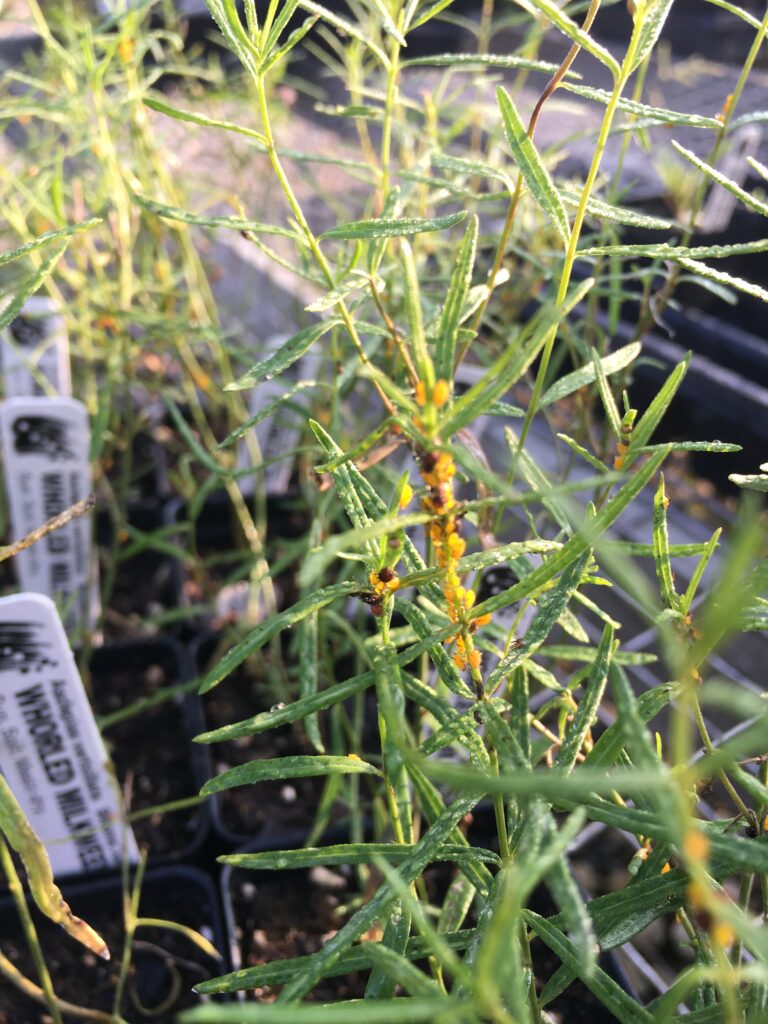Over the past few decades, there is an increased awareness of the importance of milkweeds for the life cycle of Monarchs. More and more people are planting these native wildflowers in their gardens. We closely monitor our milkweeds for monarch caterpillars and anxiously watch for the migrations in spring and fall. We can even track the populations on Monarch Watch. Milkweeds are vital to reversing the decline of this beautiful butterfly.
However, large populations of small yellow insects that typically cover the leaves and stems of the milkweed plants are threatening this important wildflower species. It seems like there are more of these tiny bugs every year. This year, we have seen large populations of them on our nursery stock and throughout the gardens. These oleander aphids (Aphis nerii) or milkweed aphids have become problematic.

Oleander aphids are not a native species, but were introduced into the U.S. on oleander. They suck the sap out of stems and leaves, can cause flowers and pods to abort, and can even kill plants. They concentrate milkweed toxins in their tissue more effectively than native milkweed aphids, which makes them toxic to beneficial insects. Like other species of aphids, their populations can explode in a short amount of time. When large populations are present, the plants will appear shiny due to the excretion of honeydew, which can also promote the growth of sooty mold.
As a milkweed gardener, what are your options?
Choose the right milkweed for your garden.
Stressed plants will attract more pests. Know your site and plant the right milkweed for your landscape. Swamp milkweed needs to be in a consistently moist area and butterfly milkweed naturally grows in areas with good drainage. Common Milkweed is very adaptable, but not for a formal garden. Plant common milkweed where they can spread and colonize a marginal area. There are many other species of milkweed that grow in sun to part shade and dry to wet. Continue to plant milkweed, but make sure it fits.
Encourage beneficial insects
With the milkweed toxins in the aphids, beneficial insects tend to leave these pests alone. This is a similar reason monarch caterpillars ingest the milkweed sap which makes them less prone to be eaten by predators. We have introduced parasitic wasp into the greenhouse to control these pests but that is not realistic outside that confined space such as your landscape. Lady beetles will typically eat aphids but they tend to shy away from these aphids.
Don’t Fertilize
Let the milkweeds grow naturally in unamended soil. Too much soil fertility will attract more aphids. These aphids reproduce more quickly on plants that have high nitrogen concentrations.
Wait
Be patient as you wait for the natural processes to work. Often, this is the hardest thing to do, because the plants are being adversely affected by thousands of these little pests.

When these cultural practices have been unsuccessful, it’s time to take a more aggressive approach. These are obviously not my first choices because they can also harm beneficial insects and even monarch caterpillars. You must use as a last resort to save the plant. Newly established milkweed plants may need some help the first few years until they get fully rooted. Mature plants typically can fend off most of these pests.
Squish
We have resorted to squishing the bugs on nursery stock. These smaller plants are easier to manage by simply squeezing the affected parts of the milkweed plant between thumb and forefinger and drag along the stem. Use a glove or paper towel as you squish because it will get messy.
Squirt
Another option is to squirt the plant with a strong blast of water especially after you have squished the bugs. Use a spray bottle of water or a jet of water from a hose. Focus the water on just the infested areas so other beneficial insects are not disturbed.
Spray
The least optimum choice is to spray with horticultural soap or oil. Concentrate the spray just on the aphid colonies. Use a piece of cardboard placed below the colony of aphids to minimize drift to other parts of the plant. Again, this is a last resort option but may be necessary to save newly established milkweeds.
Milkweeds are beautiful and essential native wildflowers. They are under assault by these non-native pests. Hopefully, you can get your milkweed plants through this onslaught of oleander aphids because they are so important for monarchs and other pollinators.
